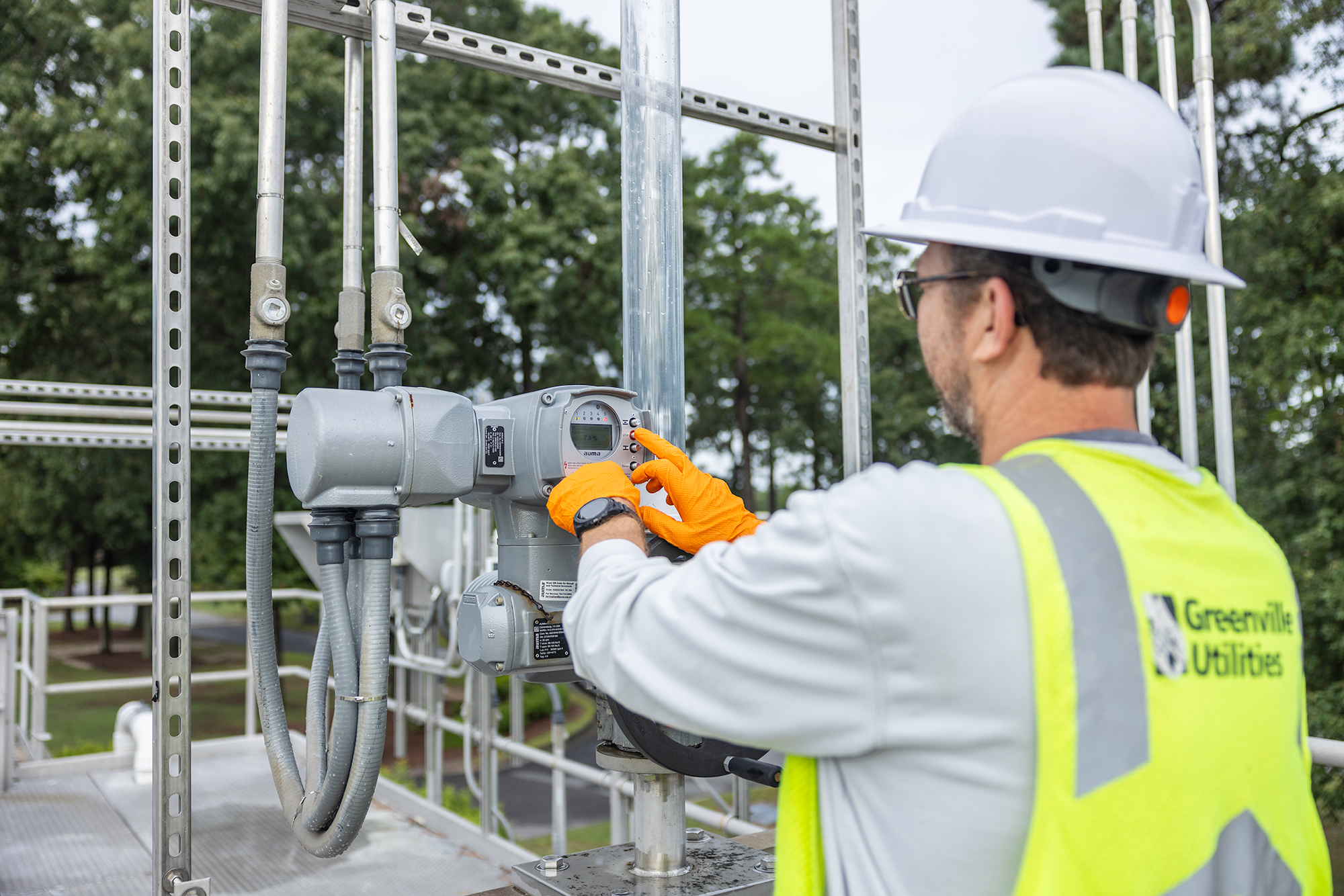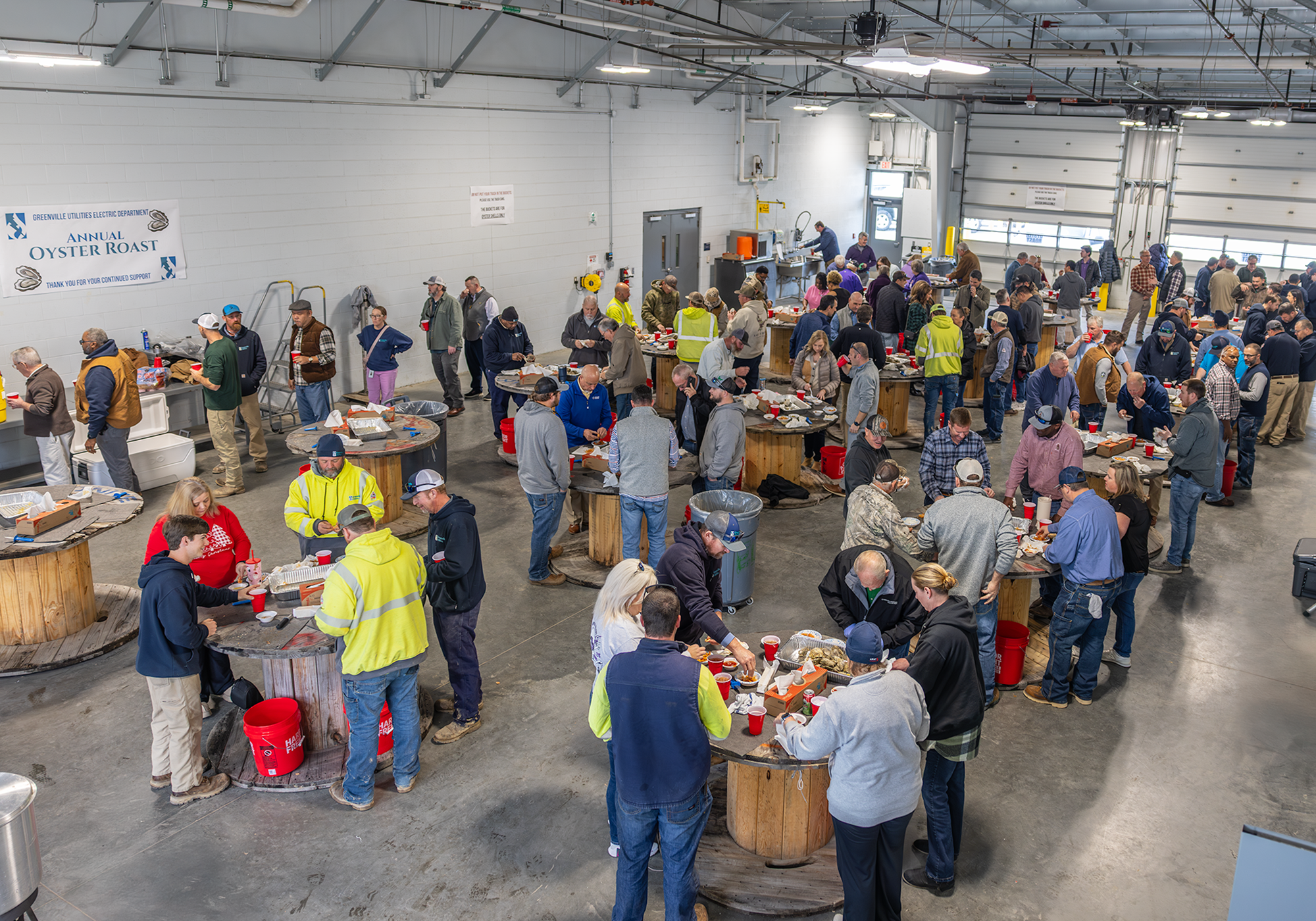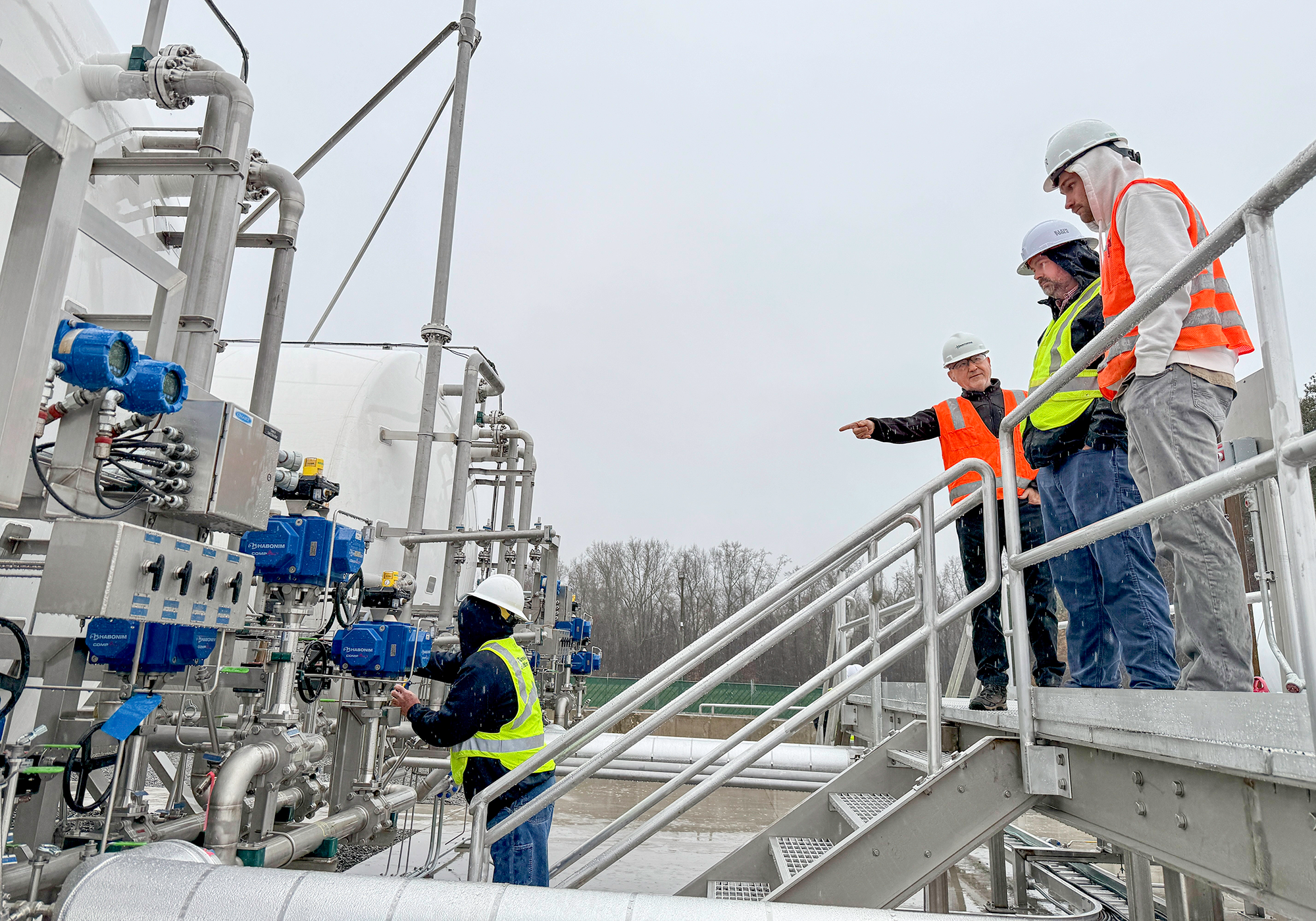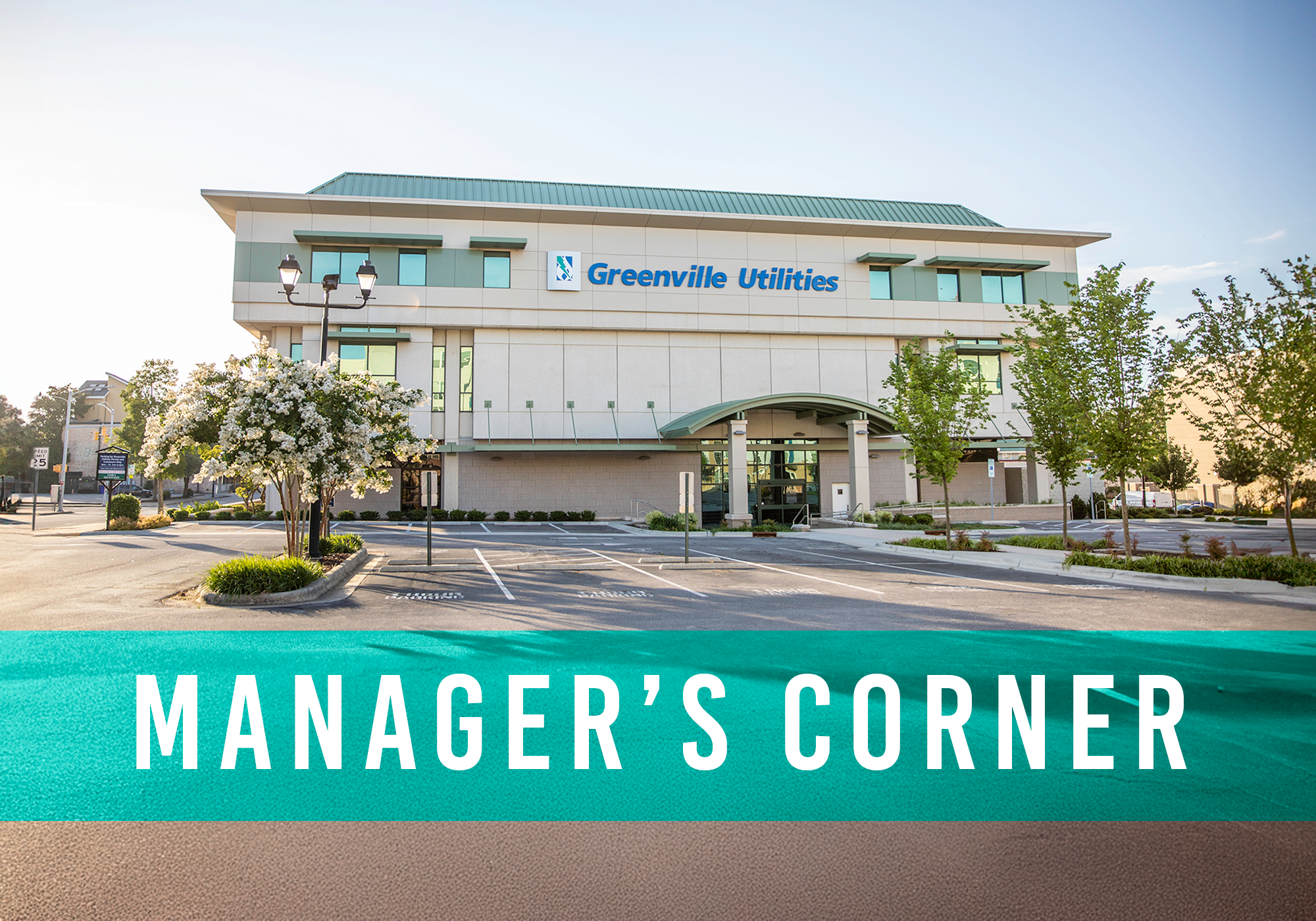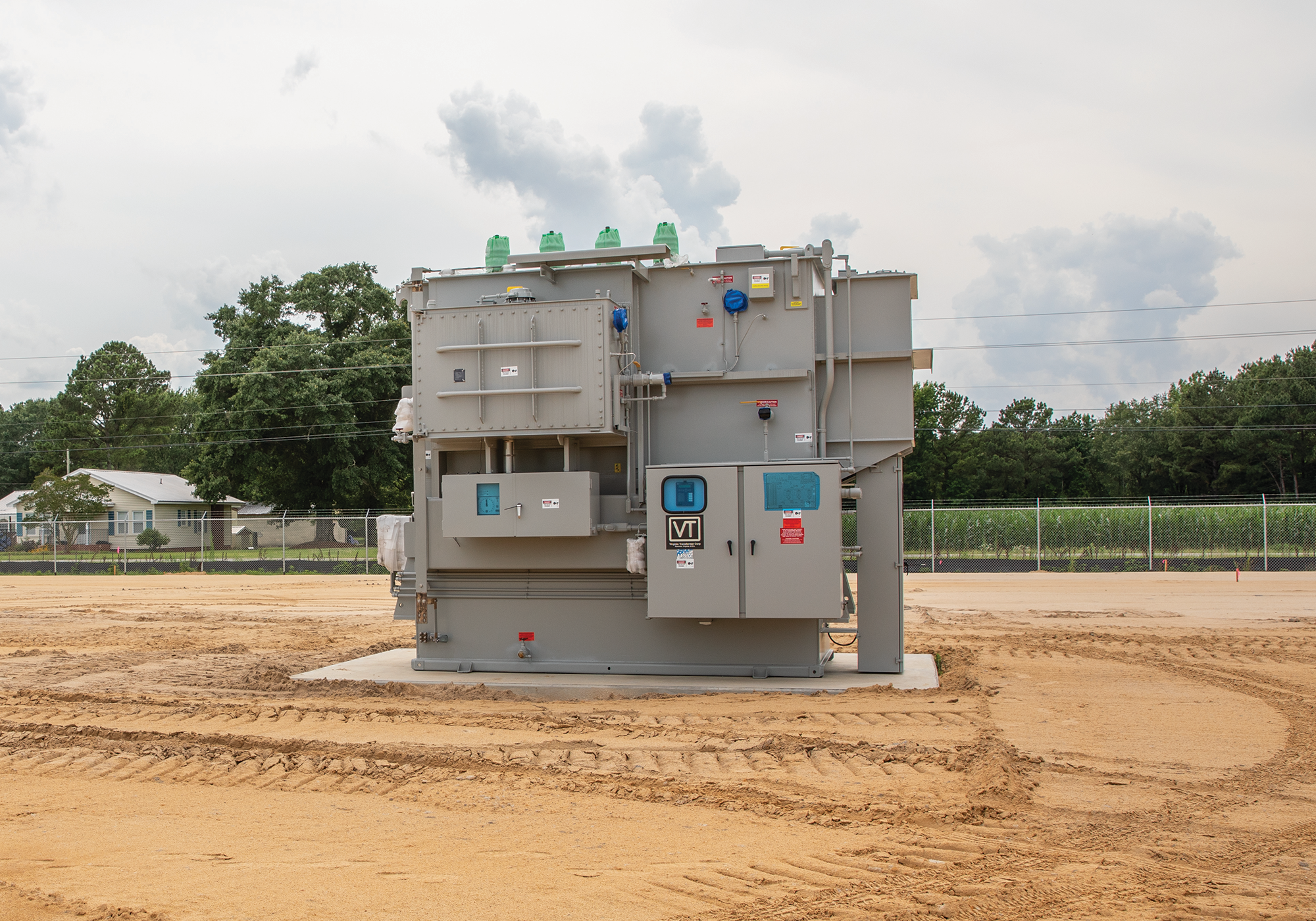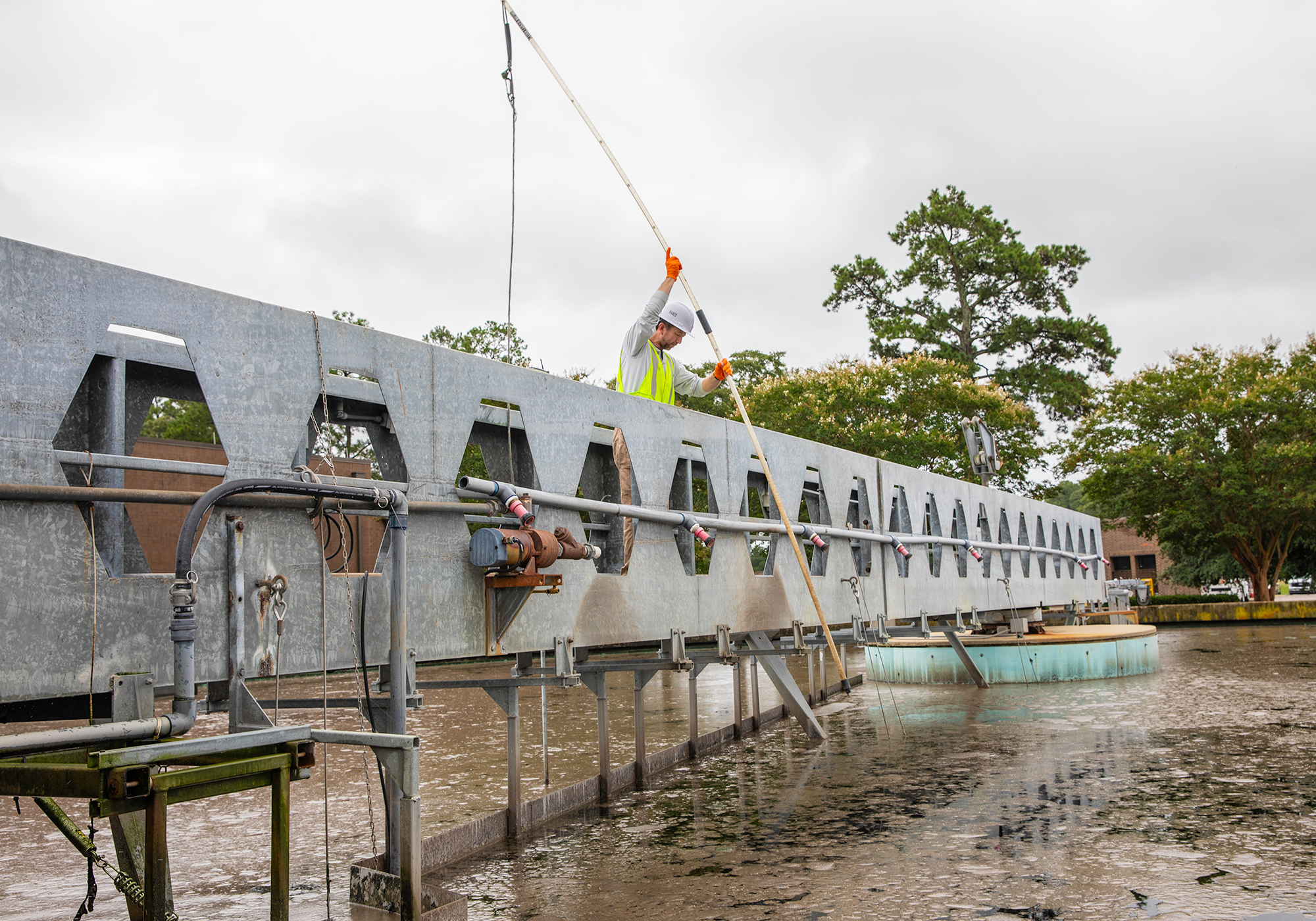
WWTP Operator II Jason Harmon checks the sludge depth in clarifier three with a sludge judge.
Work at the Wastewater Treatment Plant never ends. WWTP Operators make sure of that. They are the eyes and the ears of the Plant, monitoring every aspect of wastewater treatment from the 46 pump stations across the city and county to the millions of gallons that pour into the Plant every day.
It’s 7:30 a.m. and Jason Harmon, WWTP Operator II, is starting a new shift. He’s discussing what happened overnight with the night shift operators. A summer storm dropped around an inch and a half of rain the night before, causing an influx of wastewater into the Plant. The night ahead is expected to see more than two additional inches, and Jason H. has concerns about the influx of I&I (inflow and infiltration) into the Plant.
“It can be a bad day when there is a lot of rain at one time,” Jason said.

Chris Hill, WWTP Operations Supervisor, said a lot of people focus on hurricanes, but wastewater flows can be significantly impacted by heavy rainstorms in certain locations in the system.
“In the summer, these storms pop up, and it depends on where and how much it rained,” Chris said. “Sometimes, when you’re here at the Plant and that happens, and you have an experienced operator, they know how to handle the situation. But if there is a new operator on duty with less experience, they may not know how to deal with such event. That’s when they need the most support, not just physical, but also mentally and emotionally."
Kyle Meeks, WWTP Operator III, is experienced in what happens when rainfall takes on the wastewater system. “If we have rain like this for a week, and then we get a hurricane, that’s when all the supervisors and extra operators are here,” Kyle said, relieved that the Hurricane Erin projections on this day showed the storm not making landfall in Eastern North Carolina.
The outgoing night shift reports that everything looks good, and there were no issues, only lightening the atmosphere in the room a bit.
Our Operators work in a culture of ownership. They are personally invested in the Plant’s exceptional operation, and that is because they know what they do affects every person in the GUC service area and surrounding areas in Eastern North Carolina. They take that responsibility seriously and understand that any mistake has the potential to be catastrophic for the waterways, the water system, and the community.
“If you don’t know we are here, then we are doing a good job,” Chris said.
Jason Manning, WWTP Facility Manager, said the Operators serve a critical role at the Plant and are exceptional at offering insight into improving work processes “so that we can operate the Plant better.”
“They offer ways to increase efficiency and get more out of our assets. They are the frontline defense in sewer overflow and permit compliance. We could not do this without them. I am appreciative of all that they do.”
Making sure the wastewater is treated appropriately is a point of pride for Operators. Julius Phillips, in his recent service award interview, said he enjoyed helping people and his community. “I am a professional environmentalist,” he said, “and help make sure we treat the wastewater properly. I love that I get to serve people. This work is something that everyone needs. It is as important as anything you can do. What we do here is the difference between Pitt County being safe and modern or a third-world country.”
Tucked away off Old Pactolus Highway, down Aqua Lane, the WWTP is a massive facility that averages 11-11.2 million gallons of wastewater each day. That wastewater goes through an intense biological treatment process and is ultimately released into the Tar River – clearer and cleaner than the river itself.
“Washington, Belhaven, and all the communities downriver rely on us to keep the river clean, too,” Kyle said.
WWTP Operators work 12-hour shifts, but the work on the Plant never ends.
“This is a 24/7, 365-days a year job. We can’t shut down, ever. It doesn’t stop,” Jason H. said. “When everyone is celebrating for Christmas or Thanksgiving or any other holiday, an Operator is here. We are here together. We spend a lot of time with our shift partner. We spend more time with our shift partner than we do our own families.”
Operators build a close bond with each other because of the long hours and incredible responsibility that they carry.
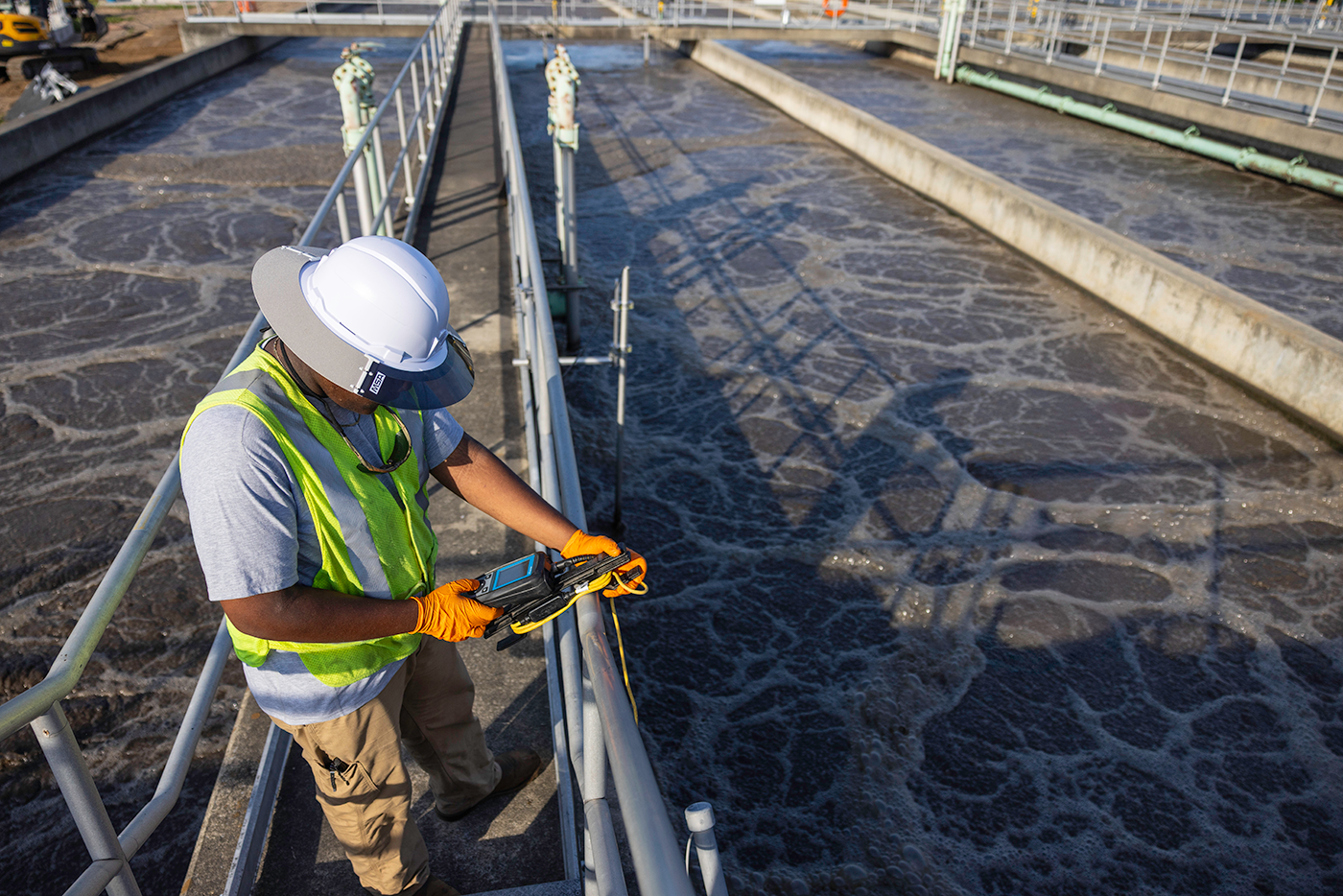
Bryon Orr, WWTP Operator Crew Leader, said the nature of the work creates strong relationships at the Plant. “It’s almost like we have become family,” he said. “Most of the time, Operators don’t really leave, and that’s because we spend so much time together, we create a bond.”When major weather events – like hurricanes – barrel through the service area, our Operators spend even more time together. Some don’t leave the site until the danger has passed. Hurricanes can overwhelm the wastewater system. To monitor the situation, Operators and other wastewater treatment staff hunker down and stay vigilant.
In 2016, Hurricane Matthew poured down nearly 12 inches of rain in Greenville, and some of the area experienced flooding the likes of which had not been experienced since Hurricane Floyd in 1999.
“I spent eight to nine days straight here after Hurricane Matthew,” Kyle said. “I looked like the Gorton Fisherman. When that situation arises, there’s a lot that has to be done.”
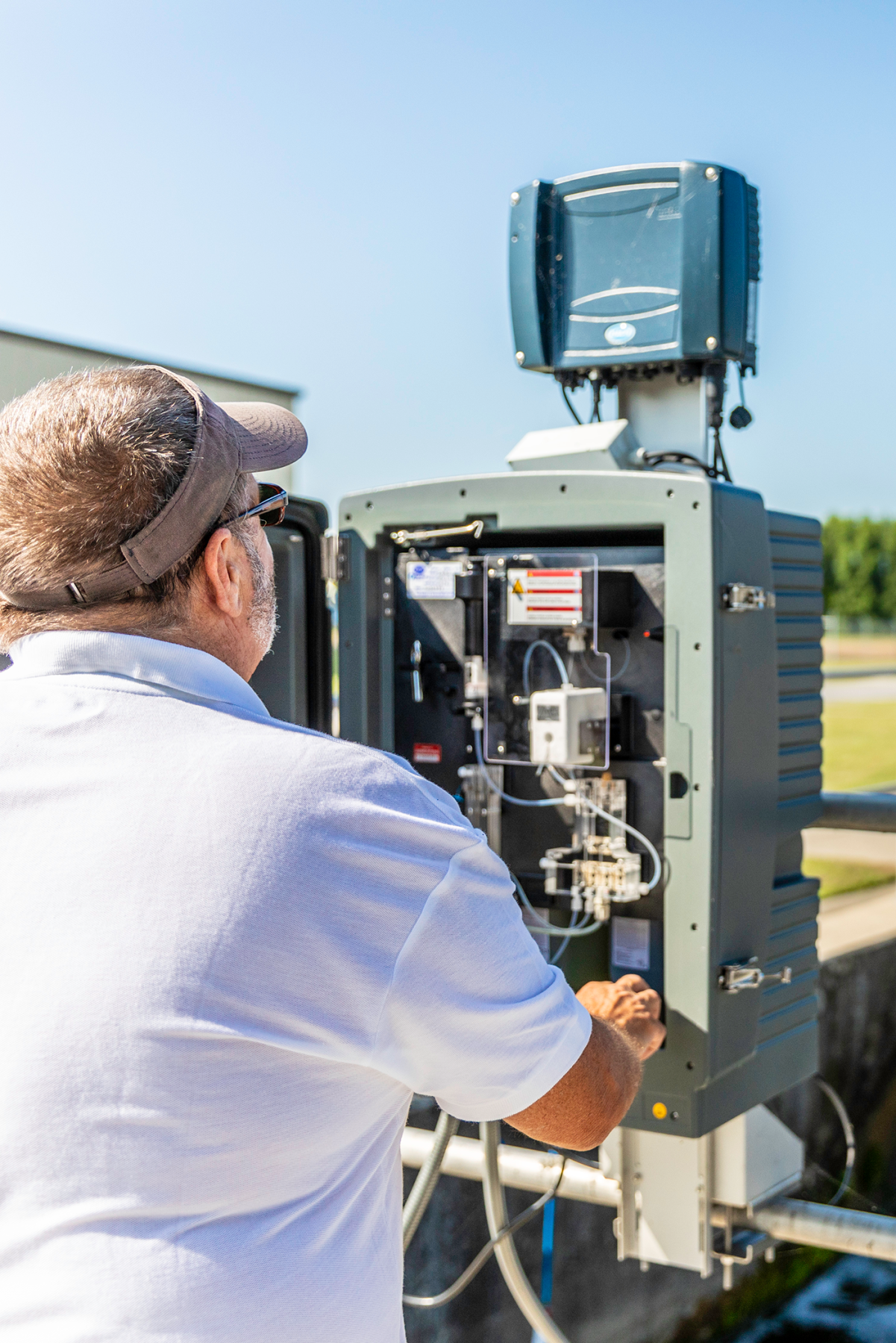
Hurricane Matthew also created a wastewater crisis in Richlands, where Chris went to assist in Mutual Aid to help that town recover. Richlands’ wastewater treatment system was severely damaged.
“Most people think that mutual aid only includes restoring electricity, but we go on mutual aid trips, too. We went to Richlands to help after Matthew. We spent 10 days there working 16 hours a day. We slept in a hotel that had been flooded,” Chris said. He said that his time in Richlands was a memorable moment that he was proud to be a part of. They helped get Richlands wastewater treatment process back online.
In 2019, Hurricane Florence meant that Chris spent time in a sleeping bag on the floor in his office at the Plant. “I spent six days at the Plant after Florence, and sleeping in a sleeping bag on the floor gets old after six days,” Chris said with a laugh.
Large TV screens with blinking dots and maps line most of the wall where the Wastewater Treatment Plant Operators watch the SCADA information pop up in real time from the pump stations and different areas of the plant.
“Operators are the ones who walk through the Plant and monitor our SCADA,” Jason Manning said. “They are critical for us. If we have a failure at a pump station, we have a very limited response time until we have a spill. Operators communicate with maintenance quickly to make sure that doesn’t happen.”
When something is wrong, SCADA will report it to the Operators, and they will call WWTP Maintenance to quickly go out to the pump station.
“If we find a problem in anything, we call maintenance,” Jason Harmon said. “We interact with everyone. We have to keep up with all of this. We are the lifeline. Whether it be at 2 a.m. or 2 p.m., we’ll call them in. SCADA is important, but we have to put our eyes on everything, too. We visually inspect everything at the Plant every four hours.”
The visual inspection can take anywhere from 45 minutes to an hour and a half, depending on the weather, the day, and the Operator.
The visual inspection begins with the primary treatment of wastewater. This is when it first flows into the Plant, screening out heavy solids, plastics, cloth material, and other things that can make a person wonder how it ever got down a drain to begin with.
“You’d be surprised at what we’ve seen come into the plant,” Jason Harmon said with a chuckle as he stands on the Influent Structure scanning equipment for anything out of the ordinary.
As he stands on the deck of the Influent Structure, he looks out over the Plant. “This is where all the wastewater from our service area comes in,” he said.
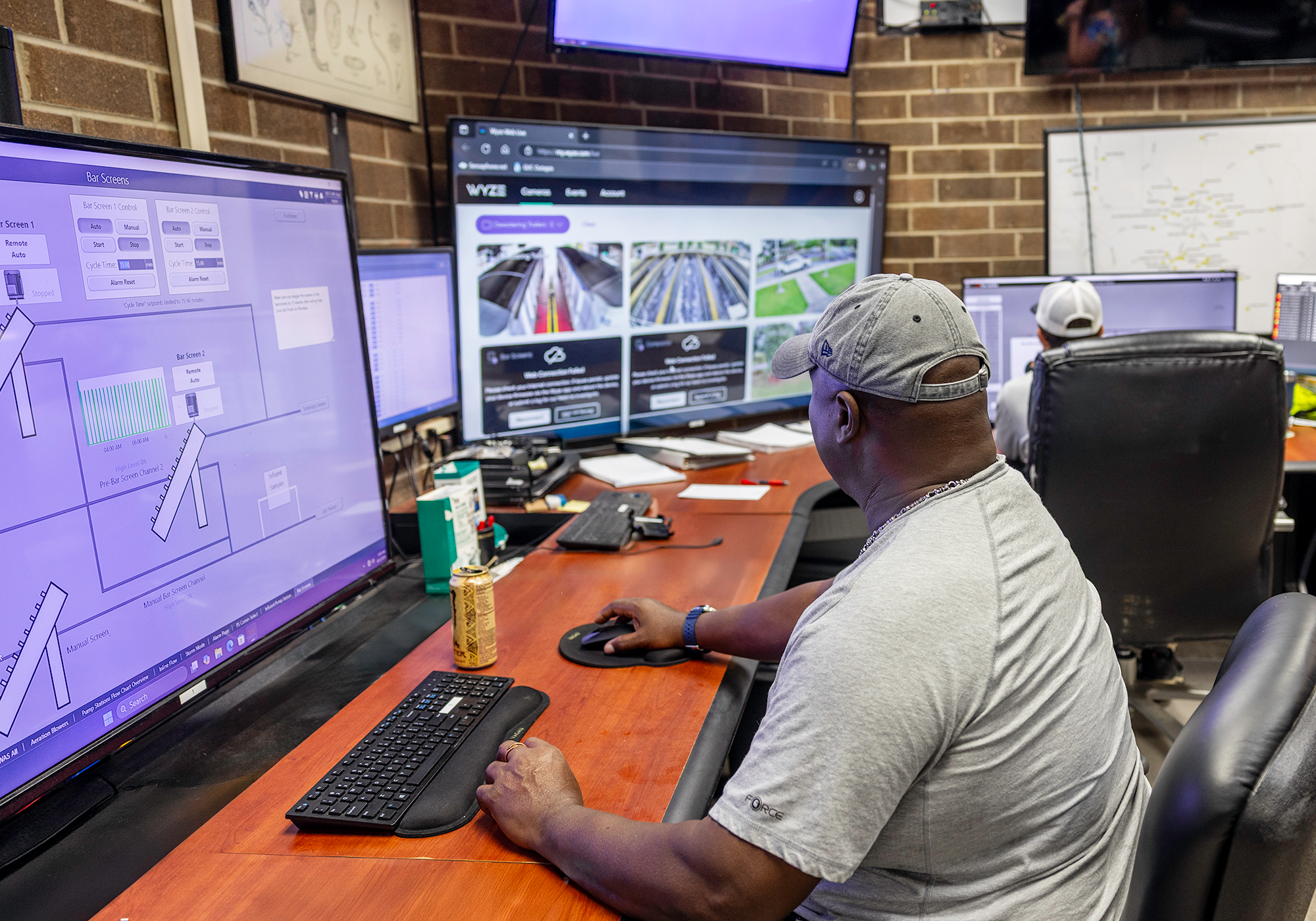
From the initial screening where solids are removed, the wastewater flows into secondary treatment, where the remaining solids are removed through aeration treatment. This is where microorganisms, known as tardigrades or water bears, eat the overgrowth of nutrients.
"We’re microorganism farmers. The whole process is completely biological,” Jason Harmon said as he inspects the aeration tank, making sure the areas that require oxygen bubbles are roiling, and the areas that need stagnation are calmly flowing.
From there, he moved on to the clarifiers. Clarifiers play an important role in sludge removal before treated wastewater can continue through the treatment process. Sludge settles at the bottom of a clarifier, leaving clear water at the top to move on to the final steps of filtration and disinfection.
Right now, the WWTP is experiencing major construction as two new clarifiers are being built to replace one that failed a couple of years ago and to add an additional one to meet growing capacity needs.
From the clarifiers, the water will be filtered again and then travel through ultraviolet light that further removes any remaining bacteria. Then off to the effluent canal it goes, back into the river after being fully treated.
Wastewater sludge is created and removed in the treatment process. That sludge is delivered to holding tanks. When those tanks are full, the sludge is pumped to the Dewatering Facility.
Kyle pays close attention to what is being produced at the Dewatering Facility. He has gotten so accustomed to the biosolid’s visual cues, that he can tell if more water needs to be removed simply by how long the biosolid adheres to the press wheels.
From the Dewatering Facility, 48 tons of biosolids a day are dumped into two tractor trailers that will go to a company that makes compost. These biosolids are returned to the earth to fertilize crops and even the wildflowers planted on the side of roads managed by the NC Department of Transportation, turning waste into something of value and even beauty.
